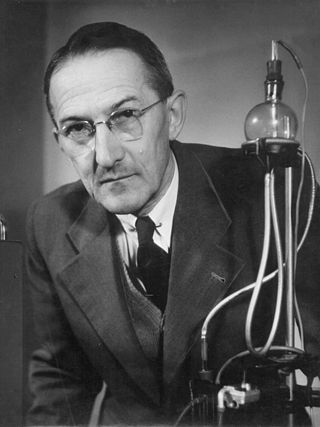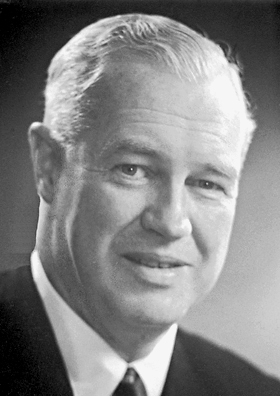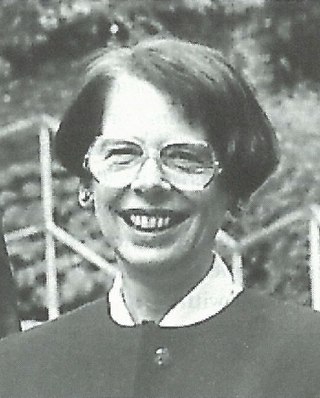Related Research Articles

Jaroslav Heyrovský was a Czech chemist and inventor. Heyrovský was the inventor of the polarographic method, father of the electroanalytical method, and recipient of the Nobel Prize in 1959 for his invention and development of the polarographic methods of analysis. His main field of work was polarography.

Alexander Robertus Todd, Baron Todd was a British biochemist whose research on the structure and synthesis of nucleotides, nucleosides, and nucleotide coenzymes gained him the Nobel Prize for Chemistry in 1957.

John Charles Polanyi is a German-born Canadian chemist. He was awarded the 1986 Nobel Prize in Chemistry for his research in chemical kinetics.

George Porter, Baron Porter of Luddenham, was a British chemist. He was awarded the Nobel Prize in Chemistry in 1967.

Frederick Sydney Dainton, Baron Dainton, Kt, FRS, FRSE was a British academic chemist and university administrator.

Herbert Aaron Hauptman was an American mathematician and Nobel laureate. He pioneered and developed a mathematical method that has changed the whole field of chemistry and opened a new era in research in determination of molecular structures of crystallized materials. Today, Hauptman's direct methods, which he continued to improve and refine, are routinely used to solve complicated structures. It was the application of this mathematical method to a wide variety of chemical structures that led the Royal Swedish Academy of Sciences to name Hauptman and Jerome Karle recipients of the 1985 Nobel Prize in Chemistry.

David Allan Bromley was a Canadian-American physicist, academic administrator and science advisor to President George H. W. Bush. His field of research was the study of low-energy nuclear reactions and structure using heavy ion beams.
Douglas Tyndall Wright, was a Canadian civil engineer, civil servant, and university administrator.
Harry Emmet Gunning, was a Canadian scientist and administrator.

Britton "Brit" Chance was an American biochemist, biophysicist, scholar, and inventor whose work helped develop spectroscopy as a way to diagnose medical problems. He was "a world leader in transforming theoretical science into useful biomedical and clinical applications" and is considered "the founder of the biomedical photonics." He received the National Medal of Science in 1974.
Hermon Carey Bumpus was an American biologist, museum director, and the fifth president of Tufts College.

Anthony Ledwith was a British chemist.
Robert P. Multhauf (1919–2004) was an American science historian, curator, director, scientific scholar and author. He served as president of the History of Science Society in the year 1979-80, and was awarded the Leonardo da Vinci Medal in 1987.
George Stafford Whitby (1887–1972) was the head of the University of Akron rubber laboratory and for many years was the only person in the United States who taught rubber chemistry. Whitby received the Charles Goodyear Medal in 1954 and in 1972, he was inducted into the International Rubber Science Hall of Fame. In 1986 the Rubber Division established the George Stafford Whitby Award in his honor.
Robin M. Hochstrasser was a Scottish-born American chemist.
Evelyn Algernon Valentine Ebsworth, was a British chemist and academic. He was the Crum Brown Professor of Chemistry at the University of Edinburgh from 1967 to 1990, and Vice-Chancellor and Warden of Durham University from 1990 to 1998.

Joyce Mary Waters, Lady Waters is a New Zealand inorganic chemist and X-ray crystallographer, who is currently professor emeritus at Massey University. She was the second woman to receive a PhD in chemistry at the University of Auckland, and the first woman to serve as president of the New Zealand Institute of Chemistry.